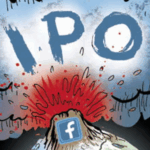“The Sell Sider” is a column written for the sell side of the digital media community.
Today’s column is written by Alessandro De Zanche, an audience and data strategy consultant.
Unilever recently announced “Unilever Trusted Publishers,” a network of global, regional and local publishers and platforms with whom it will build a media environment with common standards for viewability, verification, ad fraud prevention, brand safety, user experience, traffic quality, ad formatting and data access. It is similar to initiatives by other advertisers like Diageo, Nestle, P&G and Vodafone.
These initiatives could represent a turning point for media brands, depending on how quickly they react and interpret its underlying signal.
They send a bold message that publishers cannot improve the state of the advertising ecosystem – specifically, the supply side – by themselves, and that advertisers must take matters into their own hands.
Publisher pressures
Media brands have long raised concerns about advertisers’ and media agencies’ demands for viewability and brand safety standards. Publishers argue that the quest for near 100% viewability creates unintended consequences, such as being forced to overserve impressions to meet set goals. Likewise, strict brand safety algorithms often exclude considerable inventory that media brands would deem safe.
Adding fraud and user experience to the picture puts even more pressure on publishers. But all these elements shouldn’t come as a surprise to premium media brands. Too often in the industry, we seem to forget the relationship between cause and effect. Publishers are now paying the price for joining the programmatic open marketplace – an ecosystem where the lowest common denominator has defined the environment and made it necessary for buyers to use checks and filters to protect their investments.
Media brands are realizing their mistakes and rushing to diversify their business models and strategies, including those related to display advertising. But the damage has been done, and it will take a long time to regain advertisers’ trust and eliminate the need for strict monitoring of practices and approaches.
The irony is that media brands complain about advertisers and agencies focusing their budgets toward walled gardens, while advertisers and agencies complain about a lack of alternatives to Facebook and Google. Yet media brands aren’t providing that alternative, and advertisers and agencies keep spending with the duopoly despite recent negative news about data and privacy.
Who will create an alternative to Google and Facebook in which advertisers would happily invest? Are initiatives like the Unilever Trusted Publishers network a first sign of advertisers taking the lead while publishers, once again, play catch-up?
A publisher walled garden
Undoubtedly, the solution to this catch-22 is a cleaner, monitored, exclusive and high-quality media environment where fraud, viewability, brand safety and data are addressed consistently. This solution must also offer scale in order to present a viable option to marketers.
This is akin to quality publishers joining forces and providing a real alternative to the duopoly – a quality media walled garden. Yet it is not the direction publishers’ alliances seem to be taking.
It is becoming increasingly obvious that the programmatic open marketplace is not the solution for advertisers battling the RTB environment. Nor is it for publishers, who are struggling more than ever and abandoning display-only monetization strategies, which are mistakenly associated with the open marketplace.
Building an alternative doesn’t mean replicating the Facebook or Google ecosystems, which would be impossible and pointless. The alternative must be a different and complementary environment, with stronger context and consistent quality and scale – with scale stopping right below the threshold of quality.
Imagine the programmatic ecosystem of a country in which all the top 50 quality media brands switched off the open marketplace and created an RTB-free walled garden. Brands could own and manage the technology, data, common standards and full flow of costs, fees and monetization, making it the only way to buy quality media inventory in the country.
Risky for publishers? Marketers and media planners would have to choose between a high-quality media environment and a programmatic open marketplace without strong context, and with only medium-to-low-quality inventory and data, because there would be no more premium media left. Imagine that open market’s viewability, brand safety and privacy issues, and other headaches for advertisers and their partners.
Which of these two environments would buyers choose?
A true alternative
That scenario, in theory, should represent a true alternative to the duopoly.
Objections to such a profound change come from many sides, especially media brands, who are worried it would flatten individual publishers’ unique selling points.
Some say it’s too radical, but media brands (and the industry) need a radical proposition; the time to tinker is over, and consumer brands are done waiting. Secondly, there are unjustified worries and “emotional baggage” from a bygone era when a publisher’s main competitors were the other media brands. Today’s advertising world and its balance of power are much different, and publishers should see each other as allies.
This ecosystem would consist of a framework built on a shared currency: a common user ID (cross-device, potentially with a single login), with viewability, brand safety, attribution and a common layer of demographic data. It would also offset the issues of third-party cookies being blocked by Apple, Google and others in the future. But it would leave plenty of space for publishers’ individuality, in terms of context, content and more niche audience segments and characteristics.
Instead, fear of bold steps is paralyzing publishers’ alliances across the world, which are lost in initial theoretical grand plans. Initial ambitions clash with the practical implementation of most alliances, which results in participation in the open marketplace, the limitations of which have forced publishers to fight for their survival over the last decade or so individual publisher members continue selling the same inventory separately, offsetting the benefits of a higher purpose.
There is an opportunity for a disruptive, high-quality, category-wide alternative, but media brands won’t win this challenge by shuffling the same old cards and being reactive rather than proactive. A unique opportunity may have already started slipping away.
To put it in the words of Unilever’s Keith Weed, advertising is at a “trust or bust” moment. And so are many quality media brands.
Follow Alessandro De Zanche (@fastbreakdgtl) and AdExchanger (@adexchanger) on Twitter.













